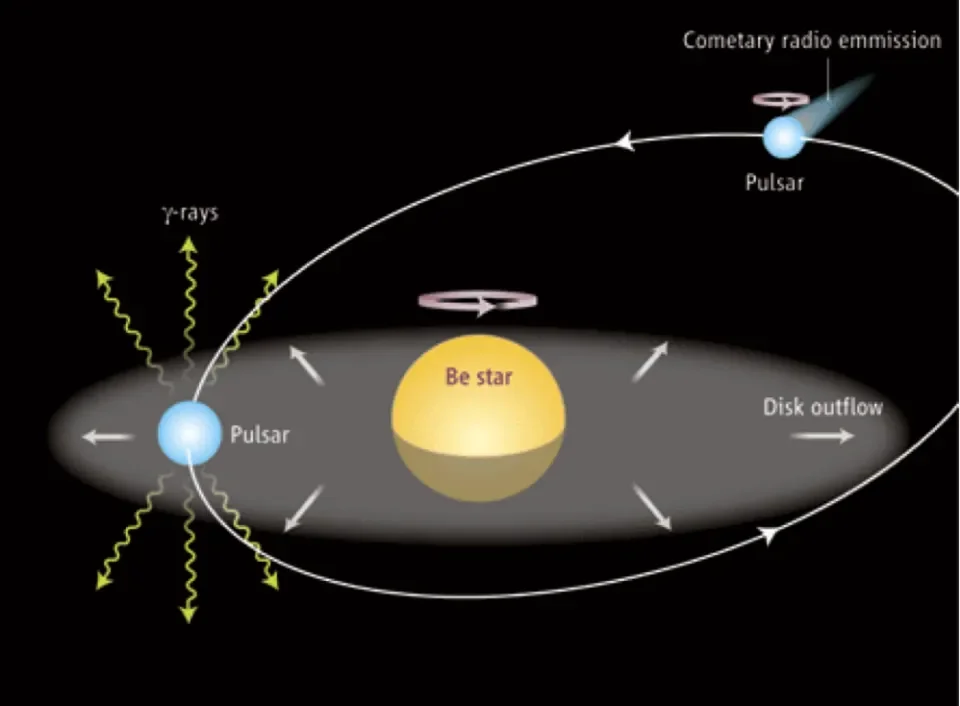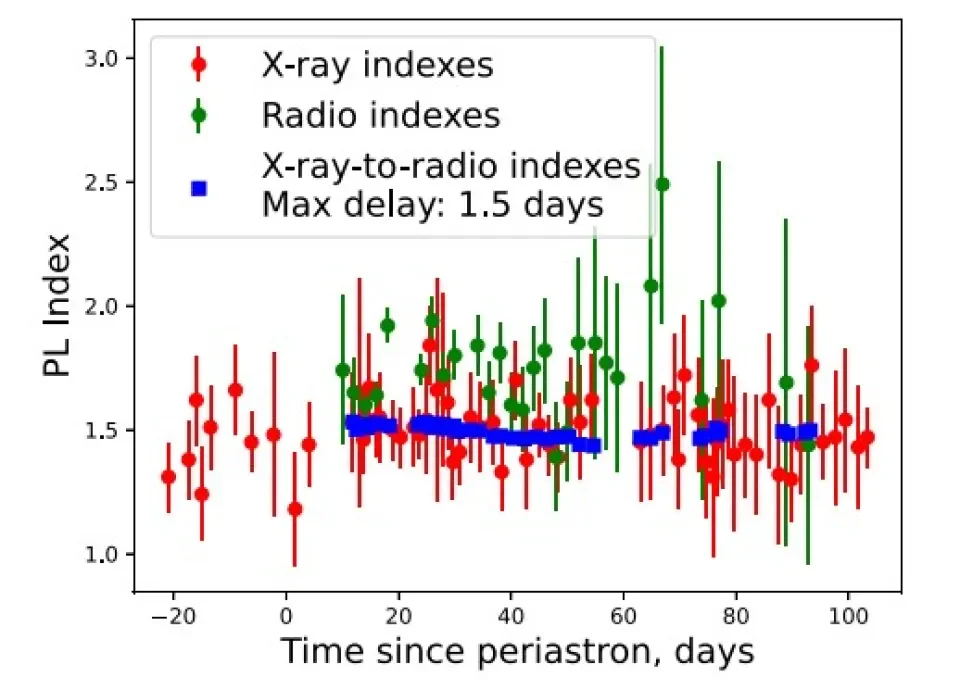
The radio to GeV picture of PSR B1259-63 during the 2021 periastron passage

Graphic showing make-up of the binary system PSR B1259-63
Dr. Masha Chernyakova from DCU School of Physical Sciences, recently published a paper detailing multiwavelength observations of the gamma-ray binary system .
PSR B1259-63. PSR B1259-63 is a gamma-ray binary system with a radio pulsar orbiting massive young star, with a period of ∼ 3.4 yr.

Figure showing evolution of X-ray and radio (1 − α) photon indexes around the periastron
Close to the periastron the system is detected at all wavelengths, from radio to the TeV energies. The emission in this time period is believed to originate from the interaction of the massive star outflow and a pulsar wind. The observations of 4 periastra passages taken in 2010-2021 show strong correlation of the radio and X-ray light curves with two peaks just before and after the periastron. In our new paper we present the results of our optical, radio and X-ray observational campaigns on PSR B1259-63 performed in 2021 accompanied with the analysis of the publicly available GeV Fermi/LAT data.
These observations reveal the presence of the 3rd X-ray peak and subsequent disappearance of radio/X-ray flux correlation. New radio data challenge the existing theoretical models and we are looking forward to the coming observations of the 2024 periastron passage to resolve the mysteries of the system.
